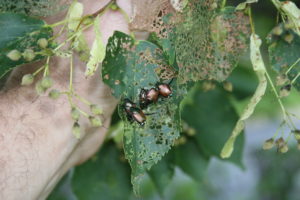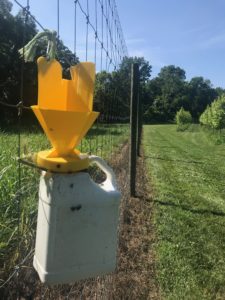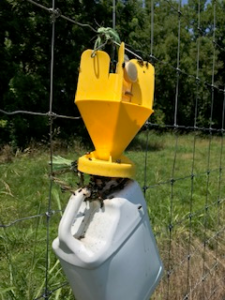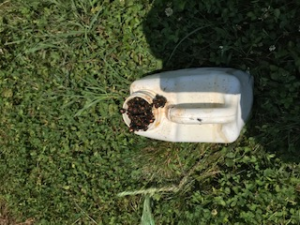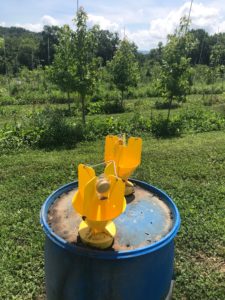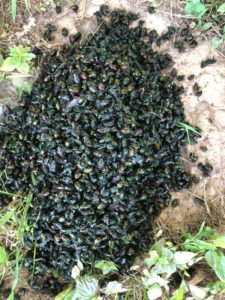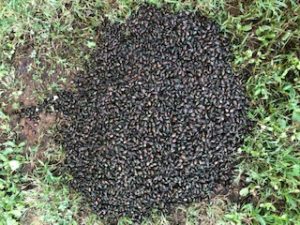THE LEAFLET

Beetle-Mania at the Casey Tree Farm
Japanese beetles (Popillia japonica) were not much of a problem in the U.S. until about 1919, when this ravenous native of Japan began a serious invasion, probably after hitchhiking to North American on imported ornamental plants. Today, they are a serious nuisance to gardeners and farmers across North America, including our mighty tree farm out in Berryville, VA.
And with all the rain we’ve been having, these shiny beetles are having quite the boom.
Unlike another unwelcome beetle the Emerald Ash Borer that is only a problem for Ash trees, Japanese beetles feed on the leaves, flowers or fruit of more than 300 species of plants. Thankfully the damage done is mostly aesthetic, but young plants and trees may be stunted, injured or even killed from severe, persistent feeding. The trees they mainly feed on? Maples, elms, lindens, cherry, birch and crab apples – aka quite a few of the species we plant.
For the first 10 months of their lives, Japanese beetle grubs live in the ground, feeding on lawn root systems. They emerge as adult beetles between May and July (depending on zones) to feed on roses, fruit trees, and flowering plants and shrubs. For 8 weeks they eat, mate, and lay eggs, starting the cycle over again.
Considering our farm is situated along the banks of the Shenandoah River and we’re dedicated to integrated pest management (aka solving pest problems while minimizing risks to people and the environment), how have we combatted these brutal beetles?
While the jury’s out about the efficacy of pheromone-based beetle traps – it is proven that traditional insecticides used to combat them are directly harmful to honey bees and that their continual use may lead to secondary pest outbreaks of other pests. So we’re sticking with the simple traps along with spraying organic clay that further protects the leaves of young trees.
Why are they only along the perimeter? It’s purposeful! Traps are placed along the outside – like a fence—around the crop you want to protect. Sort of like a barrier or force field acting as a first defense for trees.
The specially designed funnel works in tandem with the shape of the funnel. Beetles are enticed by the pheromones and fly over, hitting the vane and fall through the funnel into the collecting device! Beetles cannot fly vertically out of it, or chew their way through the heavy plastic. Thankfully our farm crew has been managing the pest incredibly well and we have not seen damage to our over 20,000 trees! The only unfortunate thing? They need to be emptied! Which is how we got photos of all our loot:
